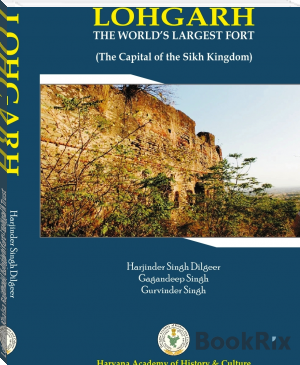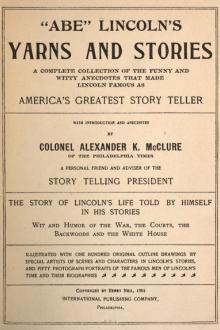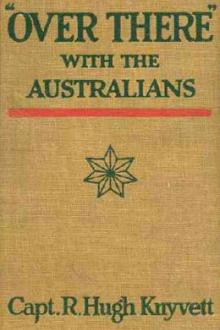Lohgarh - Khalsa Rajdhani, Lohgarh fort - Lohgarh Trust, S. Daljeet Singh Bajwa [early reader books .txt] 📗

- Author: S. Daljeet Singh Bajwa
Book online «Lohgarh - Khalsa Rajdhani, Lohgarh fort - Lohgarh Trust, S. Daljeet Singh Bajwa [early reader books .txt] 📗». Author S. Daljeet Singh Bajwa
The Sikhs put siege to both the towns and cut them from the rest of the world. All the surrounding areas were already under the control of the Sikh soldiers and the Mughal rule was confined to the walled cities of Batala and Kalanaur.33
Having established their supremacy in the zone, the Sikhs occupied Batala, Sathiala, Ghuman and Kala Afghana villages too, and, by this time some Sikhs had occupied Patti (then known as Patti Haibat Khan) town also.
Attack on Lahore (autumn 1710)
Having established their rule in Riarki and Patti zone, the Sikhs decided to attack Lahore, the provincial capital, and, a military stronghold, too. This was supposed to be a major action as the Capital of the Punjab had a big army and a large arsenal. The province, then, was under the command of prince Jahandar Shah (son of Bahadur Shah) and Sayyad Aslam Khan of Kabul was his deputy. Prince Jahandar Shah was mostly
in Delhi; hence the affairs of the province were looked after by Aslam Khan.
Having planned an attack, the Sikhs reached the outskirts of the city. They occupied the area around Shalimar and plundered the mansions of the government officials, the feudal and other affluent people; the Sikhs did not trouble even a single person from amongst the common folk. Most of the officials and the Muslim elite fled the Shalimar area and entered the walled city. They got the gates of the city of Lahore closed so that the Sikhs might not enter it. The officials asked Aslam Khan, the Deputy Chief of Lahore, to expel the Sikhs from that area, but he was very much scared of them, he had not forgotten the battles of April 1709, in which the Sikhs had killed even the Chief of Patti. So, he just defended the walled city of Lahore by locking all the gates from inside. His soldiers fought the Sikhs from inside the walls of the city and showered bullets and arrows on the Sikhs. The Sikhs too used all the weapons they had. The battle continued for two days, but, the Sikhs could not succeed in entering the city. Hundreds of people from both sides died in this battle.
When the Sikhs realized that they wouldn’t be able to break into the city, they decided to retreat and wait for another opportunity. They, still, were carrying with them a lot of wealth and just enough weapons which they had captured from the Mughals. When the Sikhs were returning from the zone, the so-called low caste people entered the Sikh files and plundered the houses of the Muslims.34
Jihad (holy war) Against the Sikhs
According to Mohammed Qasim, in September-October 1710, the Sikhs again marched towards Lahore. The Maulavis (the Muslim priests) of Lahore declared a jihad against the Sikhs. They called a gathering of the Muslims at Idgah, near Delhi Darwaza (the present site of Railway Station Lahore); and, about ten thousand Muslims responded to their call. Those who attended included Pir Mohammed Taqi (a relative of the erstwhile Prime Minister of the Mughal Emperor Shah Jahan), Musa Begh (son of Ali Wardi Khan Agarkhani), Mohammed Zaman Rangharh, Maulvi Mir
Mohammed and others.
Several Hindus too joined these fanatic Muslims. These Hindus were headed by the son (his name does not appear in any source) of Pahara Mal and the grandson of Todar Mal (who had been a minister under the Mughal Emperor Akbar). He gave liberal donations for the Muslim jihad and also offered his cannons, guns, arsenals and horses. He enrolled several young men to fight against the Sikhs and paid them good salary from his own treasury. Several other Hindus too donated big sums for this jehad.
Although Aslam Khan (Deputy Governor of Lahore) was scared of the Sikhs and he had confined himself into the Fort of Lahore, still he sent one thousand foot soldiers and five hundred horsemen under the command of Ataullah Khan and Muhib Khan Kharal to fight against the Sikhs.
These ‘holy soldiers of Islam’ fought three battles against the Sikhs: at Kotla Begum near the village of Chamiari, Qila Bhagwant Singh (pargana Sehansara) and Bhilowal (in the area known as Bharli, in Lahore zone). The first battle took place at Kotla Begum, near the villages of Bharat and Rani. Thousands of the Muslim ‘holy soldiers of the Islam’ surrounded the Sikhs present there. The number of the Sikhs was very small; hence, they fought a defensive battle and fled from the area after sunset. Their next halt was at Chamiari35. The Muslim army chased them. On their way, the ‘holy soldiers of Islam’ plundered some villages and even raped some women. When the leaders of the ‘holy army’ received information about these activities, they punished some of them, but this did not make much difference as most of the ‘holy soldiers of Islam’ were not true Muslims; they were just anti-Sikh youth.
The next day, a fierce battle was fought at Chamiari between the Sikhs and the ‘holy soldiers of Islam’. Though in small numbers, the Sikhs fought bravely, but also continued retreating for a safe defensive resort. Before it was evening, they (Sikhs) reached near Garhi Bhagwant Singh and entered the Fortress, and they closed the doors of the Fortress. Soon the ‘holy soldiers of Islam’ also reached there and put a siege to the Fortress. In the middle of the night, the Sikhs secretly came
out of the Fortress and fled away.
The next morning, the ‘holy soldiers of Islam’ entered the Fortress and were pleased to declare it as their victory. Now, they raised victory slogans and began their return journey to Lahore. On their way they decided to spend a night in the Fortress of Bhilowal. This was a small Fortress and only a few persons could stay there in; hence, only the leaders, the senior officers and priests got a place inside the Fortress and the rest had to sleep outside. When the Sikhs came to know that the soldiers were sleeping in open ground, they surrounded the area and the next morning, when the sun was yet to rise, they (Sikhs) attacked the ‘holy soldiers of Islam’ while they were still asleep. Several hundred of them were killed and the rest fled to Lahore. The Sikhs, however, did not leave the place. They compelled the leaders of the ‘holy soldiers of Islam’ to come out of the Fortress and fight. During this battle, all the leaders of the ‘holy soldiers of Islam’, including Murtaza Khan as well as the son of the Pharaoh Mall (and grandson of Todar Mall), were killed. The battle of Bhilowal brought a drop scene to the Muslims’ holy war against the Sikhs. In fact, the ‘holy soldiers of Islam’ were untrained soldiers and their first encounter with the Sikhs created awe in their minds and made them realize that they were no match for the brave Sikh soldiers.
The Sikhs won all these three battles and captured the Forts of Bhilowal and Garhi Bhagwant Singh, but they did not stay there. On the other hand, the Muslim priests too tried to provoke the Muslim youth for another war against the Sikhs but the Muslim youth were so scared of the Sikhs that they dared not fight against them (Sikhs). This was enough to establish the supremacy of the Sikhs in that zone. Now, even the Muslim authorities began fearing the Sikh soldiers. When this news reached Bahadur Shah, the Mughal Emperor, he too got scared.36 Mohammed Qasim writes that the Sikhs had established their control in the area of Riarki-Majha up to the walls of Lahore city.37
In just less than a year (November 1709 to September 1710), the Sikhs, had got freed the land between the rivers Raavi and Yamuna. They had captured Sarhind, Samana, Chhat-Banur, Rupar, Ghurham,
Kapuri, Thanesar, Shahbad, Buria, Thaska, Sadhaura, Saharanpur, Deoband, Nananuta, Ambaheta (Saharanpur province); Rahon, Batala, Kalanaur, Pathankot and Basohli (Jammu province) and had established their supremacy in these cities. Besides Chamba, Kullu, Mandi, Bilaspur, Nahan, Garhwal etc hill states had accepted the supremacy of the Sikhs. The Sikhs had appointed their own officials (police, judges, governors, etc.) in most of this area. It was the time when even the Delhi rulers were afraid of the Sikh might.38
Endnotes
In those days Satluj River used to flow by the towns of Machhiwara and Behlolpur which were very big towns in those Later, after 1750, the river changed its course, about 10 km away towards the northern side. Khafi Khan, Muntakhab-ul-Lubab, p This name is in fact a variation of the original name Chhappar Jhirhi(literally: pond and thick bower of trees and bushes).
Khafi Khan, cit., pp 652-53. Elliot and Dowson, History of India as told by its Historians. vol VII, 414. Ibid. According to Irvine, Wazir Khan was then 80 years old: Later Mughals, vol. 1, p Irvine, Ibid. According to Irvine Sher Mohammed Khan was killed before Wazir Khan Malerkotla family believes that he did not die in this battle. Khafi Khan, cit., p 654. Khafi Khan, Muntakhab-ul-Lubab., 653; Irvine, Later Mughals, vol. 1, p. 96; Elliot and Dowson, History of India As Told By Its Historians, vol.7, p.414). Tarikh-i-Punjab, p History of the Punjab, p Ibratnama, 133-46 of the printed book; 26B to 35B of the manuscript at British Library, London.
Ibid. Akhbarat-i-Darbar-i-Mualaa, 20 May Later Mughals, p An undated entry of Akhbarat-i-Darbar-i-Mualaa, entered after the report dated 13 February Entry of Akhbarat-i-Darbar-i-Mualla, dated 5.1710. It is interesting to note that Santokh Singh (in Gur Partap Suraj Granth) wrote that the battle of Sarhind was fought in 1707 when the Guru was still According to him, on hearing the news, Guru became ‘happy’. Another writer, Giani Gian Singh, who borrowed information from Santokh Singh (Gur Parap Suraj)and Ratan Singh (Prachin Panth Parkash), too mentions the date of this battle as Jeth 1764 Bikrami (May 1707 C.E.). The Sikhs’ flag was originally blue; saffron flag was adopted after 1830s in ignorance; and the Sikhs are still continuing this For details, read the book Nanakshahi Calender by Dr Harjinder Singh Dilgeer. Tarikh-i-Iradatkhani, p Kamvar, Tazkiratus Salatin Chugatta, p Akhbarat-i-Darbar-i-Mualaa, 6 November Akhbarat-i-Darbar-i-Mualaa, 1 December It is an act of ungratefulness that the Malerkotla rulers have not raised any memorial for their saviour Kishan Among these Hindus was Parma Nand Chhiber too; his elders had renounced Sikh faith and re-joined Hinduism simply to save themselves from Muslim Later, Parma Nand wrote a book distorting the history of Banda Singh and (Veer) Haqiqat Singh and presented them as Banda Bairagi and Haqiqat Rai respectively, in order to present them as Hindus. This Parma Nand boasted that he belonged to the family of Bhai Mati Das (martyr of 11 November 1675) whereas he was a descendant of Janti Das. Similar was the case of the Hindus of the Punjab, the Brahmins of the U.P. and the Dogras of Jammu who posed as Sikh in order to seek offices in the court of Maharaja Ranjit Singh, and, after the loss of his kingdom they again reverted back to Hinduism. 3rd Sikh Guru Amar Das Ji established 22 Manjis (Sikh preaching centers) in various parts of Indian Sub-Continent in mid of 16th One of the Manji was established at Buria and old is about 4 km East of Jagadhri. The encyclopaedia of Sikhism, Harbans Singh, Published By Punjabi University Patiala, Page 417.
As per the Persian sources (Ahkam-I-Alamgir 1703-07, translated by Irfan Habib) reveals that “In this while, Muhammad Auliya, resident of the township of Buria, in parana Khizrabad, sarkar Sahrind [Sirhind], has reported through persons known to this just world- adorning Court





Comments (0)